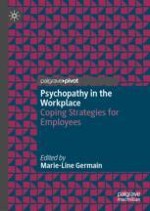2024 | OriginalPaper | Buchkapitel
8. Using the Workplace Power Control Wheel to Name Abusive, Bullying, Controlling, and Coercive Behavior by Corporate Psychopaths at Work
verfasst von : Hannah Scott
Erschienen in: Psychopathy in the Workplace
Aktivieren Sie unsere intelligente Suche, um passende Fachinhalte oder Patente zu finden.
Wählen Sie Textabschnitte aus um mit Künstlicher Intelligenz passenden Patente zu finden. powered by
Markieren Sie Textabschnitte, um KI-gestützt weitere passende Inhalte zu finden. powered by
